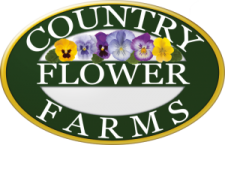Water and Light
Water when soil becomes slightly dry. Citrus do not like to be waterlogged and if over watered while flowering, will lose their flowers.
Consistency is the key when watering citrus. Watering frequency will vary with soil porosity, plant size, and environmental factors (such as growing indoors vs outdoors, temperature and how much sunlight the plant receives).
A wilted tree that perks up within 24 hours after watering indicates the roots got too dry.
A plant with yellow or cupped leaves, or leaves that don't look perky after watering can indicate excessive watering and soggy roots. Citrus plants prefer infrequent, deep watering to frequent, shallow sprinklings. Deeper watering promotes deeper root growth and strengthens your plant. Generally, deep watering once or twice per week works well for container grown citrus.
When Inside: Citrus need at least 6 hours of direct sunlight per day; an unobstructed south or south west window is perfect! Keep away from drafts.
When Outside: Your citrus tree should be placed outside after the night temperature rises above 55 degrees. Sunny, wind-free locations with southern exposure are the best.
Fertilizer
Citrus plants feed heavily on nitrogen. Your fertilizer should have more nitrogen (N) than phosphorous (P) or potassium (K). Use at least a 2-1-1 ratio. Ideally, a citrus fertilizer should be used. Fish and Seaweed Emulsion is also beneficial. Any good citrus formula will contain trace minerals like iron, zinc, and manganese.
Pruning
The graft union on the plant can usually be seen as a diagonal scar between four and eight inches from the soil. Remove all shoot growth below the graft. These "suckers" take vitality from the top of the plant (the fruiting wood). The growth of suckers is especially vigorous on young trees. Remove them as soon as they are observed.
Prune off thorns if desired.
Citrus can be shaped as desired, and will look fuller with occasional pruning to shape leggy branches. Pruning should be done after the plant finishes fruit yield. Some plants may develop erratic young growth above the graft. If so, prune for shape and balance. Also, Prune away any crossing branches; other fruitful branches will replace them. Any growth above the graft can eventually bear fruit. Well-pruned plants have higher fruit yields and are less prone to branch breakage.
Re-potting
Re-pot every 3 years to a pot with a diameter 2-3” wider than the current planter.
Be sure the graft line is above soil line and the roots are below the soil surface.
Select a soil with good drainage such as a potting mix. If a potting soil is used, mix in perlite, vermiculite, humus or compost to provide more drainage.


































